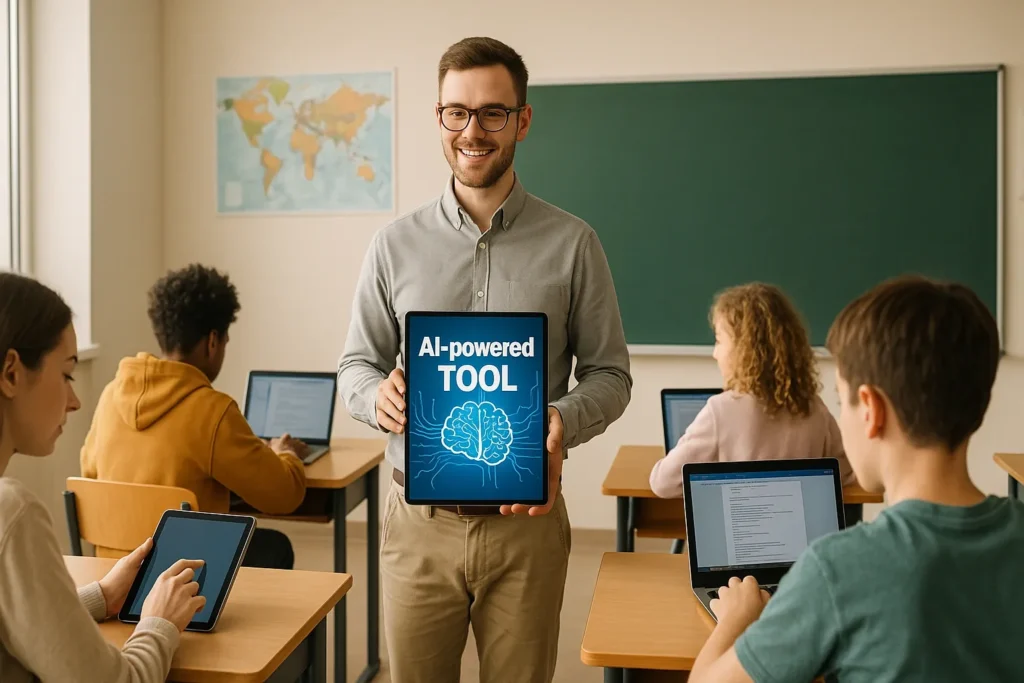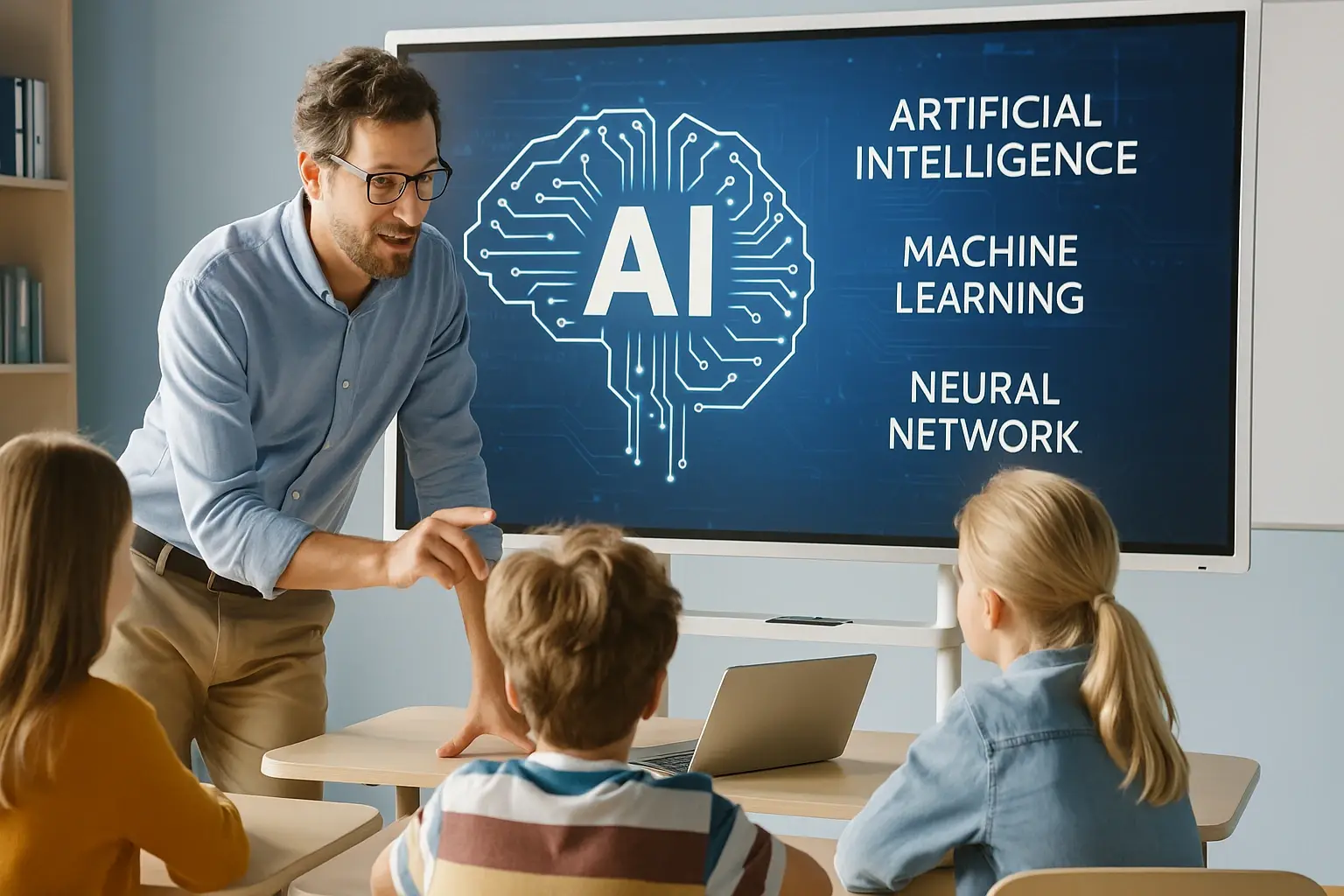Artificial Intelligence (AI) is transforming the way we approach teaching and learning. But can AI truly replace traditional teaching methods? This question has sparked curiosity and concern among educators, parents, and students alike. In this article, we will explore how AI can enhance education while understanding its limits in replacing human interaction.
What Is AI in Education?
AI in education refers to the use of smart technologies to help teachers and students in various ways. These tools can automate tasks, provide personalized learning experiences, and even assist in grading assignments. But is it enough to replace the warm, human touch that traditional teachers offer?
AI can adapt to students’ learning needs, providing tailored experiences that traditional teaching methods may struggle to achieve. However, the essence of teaching is not just about delivering content—it’s about guiding, mentoring, and building relationships. AI cannot fully replicate these human aspects.
Can AI Replace Teachers in the Classroom?
The Limitations of AI in Education
AI can automate administrative tasks like grading, organizing, and tracking student progress. Tools like intelligent tutoring systems (ITS) can even help students understand complex topics. However, AI cannot replace the emotional intelligence and social skills that a teacher brings to the classroom. Here are a few reasons why:
- Human Connection: Teachers offer more than just knowledge—they build relationships, encourage social skills, and provide emotional support.
- Adaptability: While AI can adapt to a student’s academic level, it struggles to respond to a student’s emotional state or the unique dynamics of a classroom.
- Creativity: Teachers use creative methods to engage students. Whether through hands-on projects or classroom discussions, creativity in teaching cannot be fully automated.
Despite these limitations, AI can act as a powerful tool to assist teachers. Imagine AI systems providing real-time feedback or helping students review content in a way that suits their individual pace. This means teachers can focus more on personal interactions and less on administrative tasks.
How AI Enhances Traditional Teaching
While AI may not replace teachers, it can definitely improve how we teach. Here’s how:
- Personalized Learning: AI can track each student’s progress and adapt lessons to meet their needs. For example, AI programs can analyze a student’s strengths and weaknesses and recommend tailored activities to help them improve.
- Time-saving Tools: AI can automate tasks like grading, lesson planning, and even suggesting additional resources for teachers. This allows educators to spend more time engaging with students.
- Support for Special Education: AI can provide additional resources for students with learning disabilities. Tools like speech-to-text or reading assistance help students engage with content in ways that are accessible to them.
Key Challenges to Replacing Traditional Teachers with AI
Although AI has many benefits, there are key challenges in replacing traditional teaching methods:
- Emotional Support: A teacher’s role in providing emotional guidance and managing classroom dynamics is crucial for students’ social and emotional development. AI lacks the ability to empathize with students or understand their moods.
- Ethical Concerns: There are concerns about privacy and data security. AI systems often collect large amounts of data to personalize learning, but how is this data protected?
- Limited Flexibility: AI might struggle to deal with unexpected classroom challenges. For instance, a technical malfunction or a new student joining mid-semester could disrupt the learning process.
👉AI in Education: Opportunities and Challenges in simple language, showing how AI helps and what to watch out for in schools.
How Teachers Can Embrace AI in the Classroom
Instead of viewing AI as a competitor, teachers can see it as a partner. Here are some practical ways AI can work alongside teachers:
- Use AI for Repetitive Tasks: Let AI handle the repetitive administrative tasks, like grading homework or tracking student performance. This gives teachers more time to focus on teaching.
- Implement AI-Powered Learning Tools: AI can provide interactive learning experiences for students, like virtual tutors, language apps, or math-solving assistants.
- Provide Professional Development: Teachers can use AI tools to enhance their own skills. AI-powered platforms can suggest resources and training based on a teacher’s specific needs.

Conclusion: AI as a Complement to Traditional Teaching
In conclusion, AI is not here to replace traditional teaching, but to complement it. By automating administrative tasks and providing personalized learning, AI allows teachers to focus on what they do best: guiding, mentoring, and building meaningful relationships with students.
AI’s true potential lies in being a supportive tool that empowers teachers to reach more students in innovative ways. With the right balance, AI can be the ally every educator needs to transform classrooms for the better.
Key Points About “Can AI in Education Replace Traditional Teaching?”
- AI can personalize learning but cannot replace human interaction.
- Teachers provide emotional and social support that AI cannot replicate.
- AI can automate administrative tasks and provide personalized resources for students.
- Teachers can use AI tools to enhance their own teaching and focus more on student engagement.
Conclusion
AI is a powerful tool that enhances teaching and learning experiences, but it is not a replacement for teachers. While AI can automate certain tasks and provide personalized learning, the human connection, creativity, and adaptability that teachers offer remain irreplaceable. Teachers who embrace AI can use it to enhance their teaching methods and improve student engagement.
Engage with us! What are your thoughts on AI in education? Do you think it will replace traditional teaching methods, or should it remain a tool to assist teachers? Share your thoughts in the comments below!

